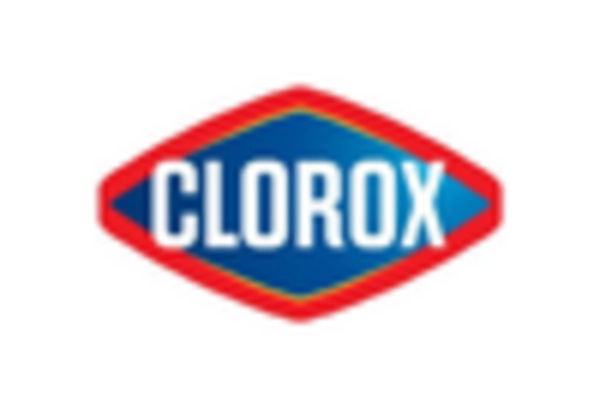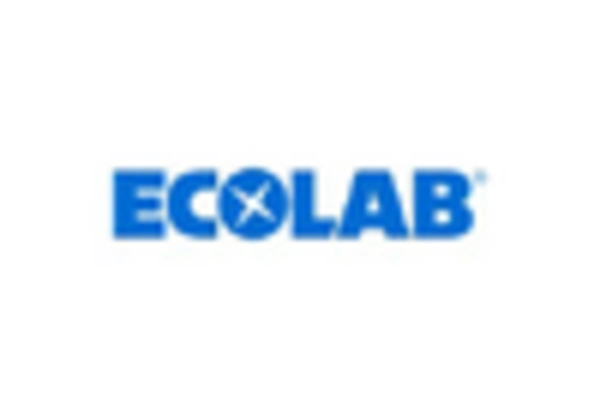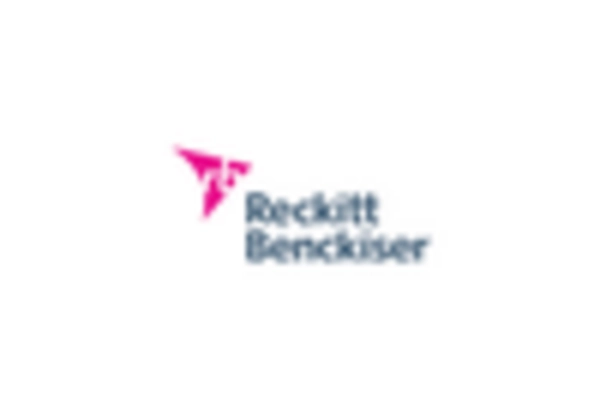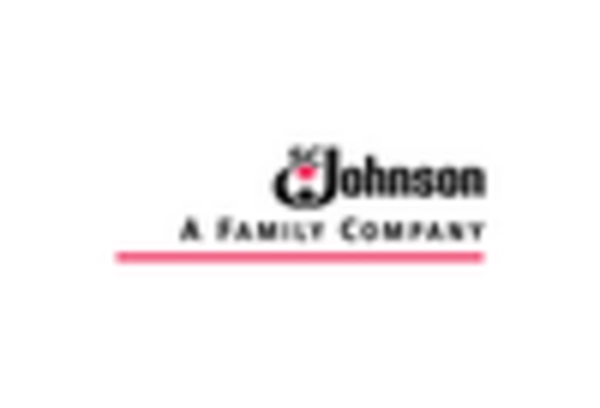Rising Health Awareness
The increasing awareness of health and hygiene among consumers is a pivotal driver for the aerosol disinfectants market. As individuals become more conscious of the importance of maintaining clean environments, the demand for effective disinfecting solutions rises. This trend is particularly pronounced in households and commercial spaces, where the need for sanitization is paramount. According to recent data, the aerosol disinfectants market is projected to grow at a CAGR of approximately 6.5% over the next few years, reflecting the heightened focus on health. Consumers are actively seeking products that not only disinfect but also provide long-lasting protection against pathogens. This shift in consumer behavior is likely to propel the aerosol disinfectants market forward, as manufacturers respond with innovative formulations that meet these evolving needs.
Expansion of Retail Channels
The expansion of retail channels significantly influences the aerosol disinfectants market. With the rise of e-commerce and the diversification of retail formats, consumers have greater access to a variety of disinfectant products. This accessibility is crucial, as it allows consumers to compare options and make informed purchasing decisions. In 2025, online sales of aerosol disinfectants are expected to account for a notable share of the market, driven by convenience and the ability to deliver products directly to consumers' homes. Additionally, brick-and-mortar stores are increasingly dedicating shelf space to aerosol disinfectants, enhancing visibility and availability. This trend indicates a robust growth trajectory for the aerosol disinfectants market, as retailers adapt to consumer preferences and the demand for hygiene products continues to rise.
Innovation in Product Formulations
Innovation in product formulations plays a crucial role in shaping the aerosol disinfectants market. Manufacturers are increasingly investing in research and development to create advanced disinfectant solutions that are both effective and user-friendly. This includes the development of aerosol disinfectants that are capable of eliminating a broader spectrum of pathogens while being safe for various surfaces. The introduction of new active ingredients and delivery mechanisms is likely to enhance the efficacy of these products, appealing to a wider consumer base. As of November 2025, the market is expected to benefit from these innovations, with consumers gravitating towards products that offer superior performance. This trend suggests a competitive landscape where companies that prioritize innovation will likely capture a larger share of the aerosol disinfectants market.
Increased Focus on Workplace Safety
The emphasis on workplace safety is a significant driver for the aerosol disinfectants market. Organizations across various sectors are prioritizing the health and safety of their employees, leading to increased investments in cleaning and disinfecting solutions. This trend is particularly evident in industries such as healthcare, hospitality, and food service, where maintaining a sanitized environment is critical. As a result, the aerosol disinfectants market is witnessing a surge in demand, with businesses seeking reliable products that ensure compliance with safety regulations. In 2025, the market is anticipated to see a substantial increase in sales, as companies recognize the importance of creating safe workspaces. This focus on safety not only enhances employee well-being but also contributes to overall productivity, further driving the growth of the aerosol disinfectants market.
Regulatory Support for Disinfectant Products
Regulatory support for disinfectant products is a key driver for the aerosol disinfectants market. Government agencies are increasingly recognizing the importance of effective disinfecting solutions in public health. This has led to the establishment of guidelines and standards that encourage the development and use of safe and effective aerosol disinfectants. In 2025, the market is expected to benefit from favorable regulations that promote the use of environmentally friendly ingredients and sustainable practices in formulating products. Such regulatory frameworks not only enhance consumer trust but also stimulate innovation within the industry. As manufacturers align their products with these regulations, the aerosol disinfectants market is likely to experience growth, driven by a commitment to safety and environmental responsibility.

















Leave a Comment